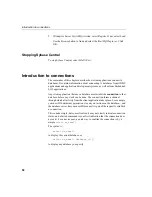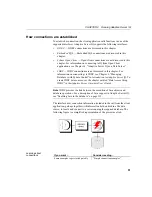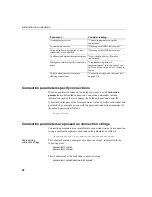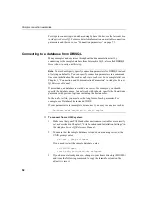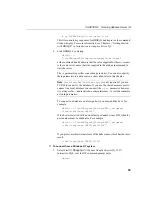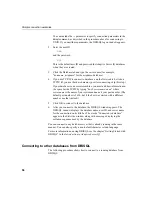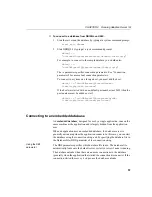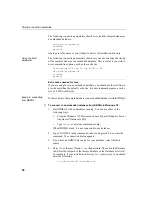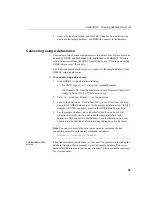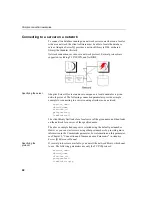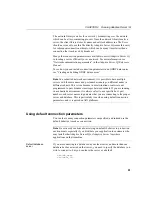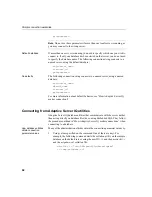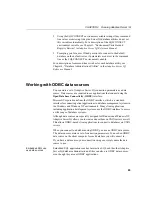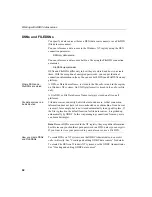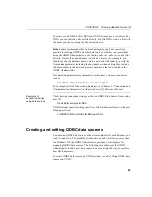
Working with ODBC data sources
64
DSNs and FILEDSNs
You specify a data source either as a DSN (data source name) or as a FileDSN
(file data source name).
You can reference a data source in the Windows NT registry using the DSN
connection parameter:
DSN=
my data source
You can reference a data source held in a file using the FileDSN connection
parameter:
FileDSN=
mysource.dsn
DSNs and FileDSNs differ only in how they are stored, and how you create
them. With the exception of encrypted passwords, you can put identical
connection information in them. You can use both DSNs and FileDSNs on any
platform.
Where DSNs and
FileDSNs are stored
A DSN, or Data Source Name, is stored in the file odbc.ini and in the registry
on Windows NT systems. On UNIX platforms it is stored in the odbc.ini file
only.
A FileDSN, or File Data Source Name, is always stored on a file on all
platforms.
File data sources can
be distributed
File data sources can easily be distributed to end users, so that connection
information does not have to be reconstructed on each machine. It can be sent
via email, for example, but is not stored automatically in any public place. If
the file is placed in the default location for file data sources, it is picked up
automatically by ODBC. In this way, managing connections for many users
can be made simpler.
Note
Because DSNs are stored in the NT registry, they are public information.
For this reason you should not put a password in a DSN, unless you encrypt it.
If you want to store your password in your data source, use a File DSN.
How you create DSNs
and FILEDSNs
To create DSNs on NT systems, use the ODBC Administrator; do not edit
odbc.ini directly. See “Creating and editing ODBC data sources” for details.
To create File DSNs on Windows NT systems, use the ODBC Administrator.
See “Creating and editing ODBC data sources”.
Summary of Contents for Adaptive Server IQ 12.4.2
Page 1: ...Administration and Performance Guide Adaptive Server IQ 12 4 2 ...
Page 16: ...xvi ...
Page 20: ...Related documents xx ...
Page 40: ...Compatibility with earlier versions 20 ...
Page 118: ...Troubleshooting startup shutdown and connections 98 ...
Page 248: ...Importing data by replication 228 ...
Page 306: ...Integrity rules in the system tables 286 ...
Page 334: ...Cursors in transactions 314 ...
Page 396: ...Users and permissions in the system tables 376 ...
Page 438: ...Determining your data backup and recovery strategy 418 ...
Page 484: ...Network performance 464 ...
Page 500: ...System utilities to monitor CPU use 480 ...
Page 514: ...Characteristics of Open Client and jConnect connections 494 ...
Page 536: ...Index 516 ...

